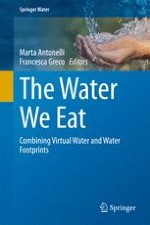2015 | OriginalPaper | Chapter
Calculating the Water Footprint of an Agri-Food Company’s Supply Chain: The Mutti Case
Authors : Monia Santini, Riccardo Valentini
Published in: The Water We Eat
Publisher: Springer International Publishing
Activate our intelligent search to find suitable subject content or patents.
Select sections of text to find matching patents with Artificial Intelligence. powered by
Select sections of text to find additional relevant content using AI-assisted search. powered by
